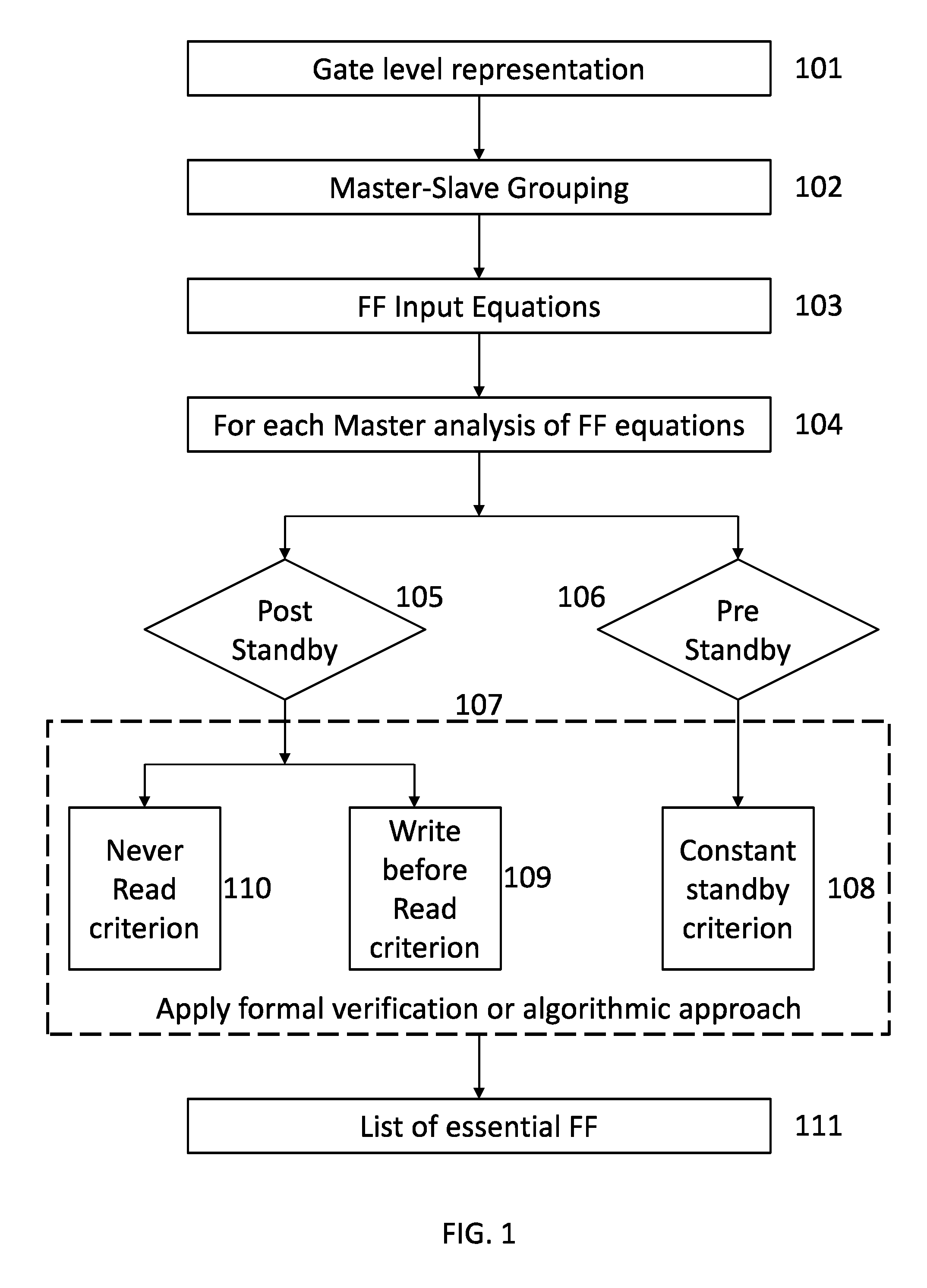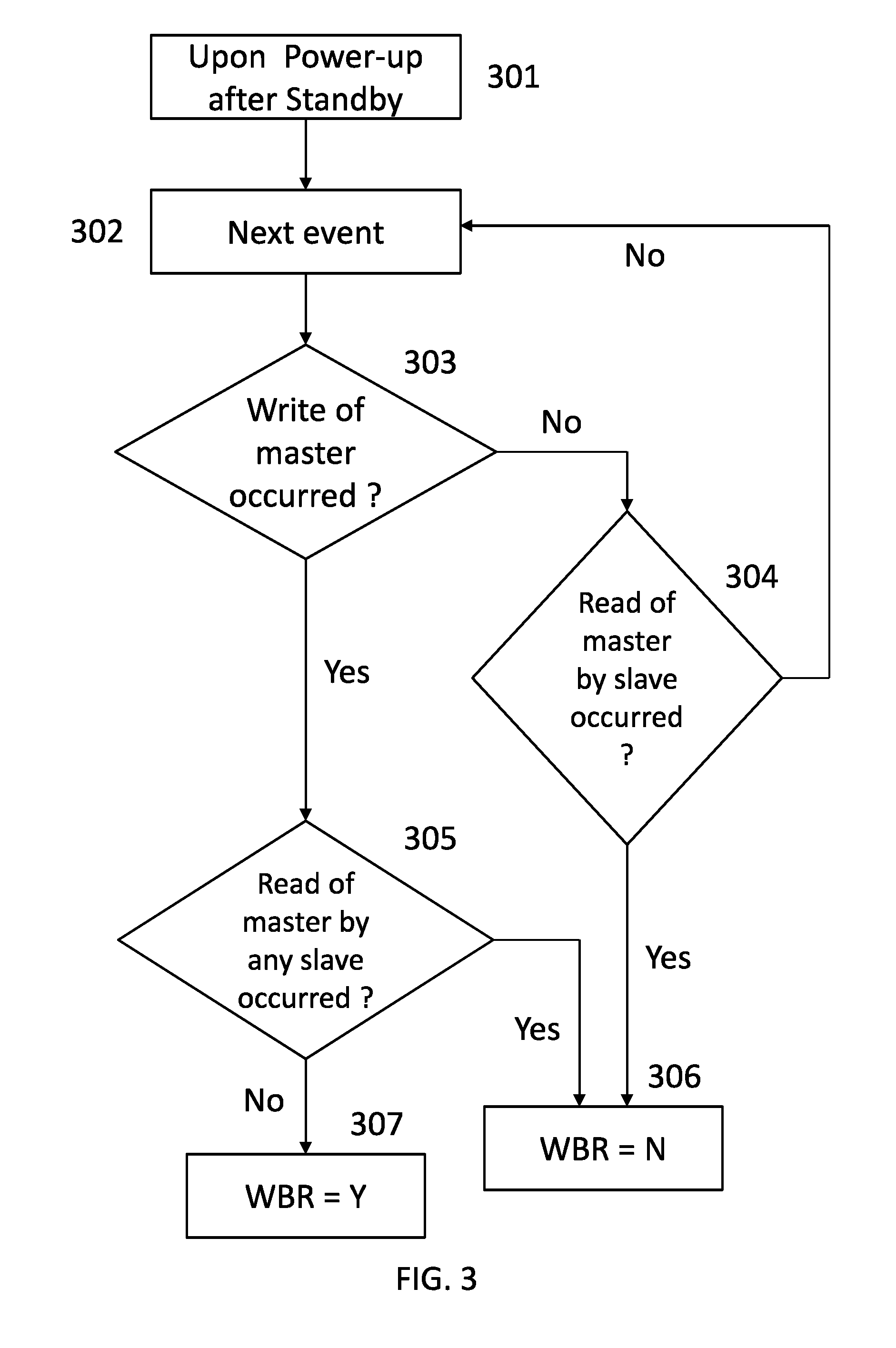Method for finding non-essential flip flops in a VLSI design that do not require retention in standby mode
a technology of flip flops and design, applied in the field of vlsi design, can solve the problems of large energy consumption, fast battery exhaustion, energy consumption, etc., and achieve the effect of saving area and power
- Summary
- Abstract
- Description
- Claims
- Application Information
AI Technical Summary
Benefits of technology
Problems solved by technology
Method used
Image
Examples
first embodiment
[0076]FIG. 6 describes in more detail the Formal Verification approach (the first option of step 107 of FIG. 1) for determining the non-essential flip flops of the design, according to the invention. The input to the process described in FIG. 6 is the gate level representation—601 of the circuit design. In step 602, the design is parsed to plurality of master-slave pairs. A master flip flop may be common to plurality of slaves, therefore it may be included within several pairs. All the pairs relating to the same master flip flop are grouped together, such that they belong to the same group. In step 603, which is performed essentially in parallel to step 602, the input equations for each flip flop in the circuit are determined. In step 604 assertions with respect to each flip flop are created, more specifically, and then the—three criteria (WBR, Never Read, and Constant) are translated into appropriate assertions. The manner of defining these assertions will be elaborated hereinafter...
second embodiment
[0077]FIG. 7 describes in more detail the Algorithm based approach (the second option of step 107 of FIG. 1) for determining the non-essential flip flops in a given design, according to the invention. The input to the process described in FIG. 7 is again the gate level representation 701 of the design. In step 702, the design is parsed to plurality of master-slave pairs. A master flip flop may drive plurality of slaves, therefore it may be included within several master-slave pairs. All the pairs relating to the same master flip flop are grouped together, such that they belong to the same group. In step 703, which is performed essentially in parallel to step 702, the input equations for each flip flop in the design are determined. In step 704 BDD (Binary Decision Diagram) representations of the design are created for each flip flop. In step 705 all the BDDs are analyzed to verify whether any of the criteria (WBR, Never Read, and Constant) are met. If none of the criteria are met, th...
PUM
 Login to View More
Login to View More Abstract
Description
Claims
Application Information
 Login to View More
Login to View More - R&D
- Intellectual Property
- Life Sciences
- Materials
- Tech Scout
- Unparalleled Data Quality
- Higher Quality Content
- 60% Fewer Hallucinations
Browse by: Latest US Patents, China's latest patents, Technical Efficacy Thesaurus, Application Domain, Technology Topic, Popular Technical Reports.
© 2025 PatSnap. All rights reserved.Legal|Privacy policy|Modern Slavery Act Transparency Statement|Sitemap|About US| Contact US: help@patsnap.com



